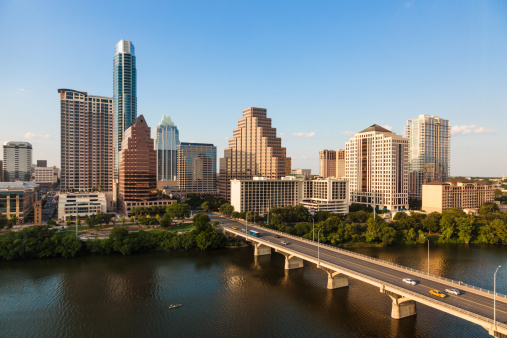![635495335431090024-147331308 [ID=17702979]](http://www.gannett-cdn.com/-mm-/4044b1e7645488621f157de466cf1a990870caa2/r=500x333/local/-/media/KVUE/None/2014/10/22/635495335431090024-147331308.jpg)
AUSTIN -- Austin is revered as the liberal city in a red state, but it hasn't always been progressive when it comes to race relations.
The city charter confined blacks to living in one part of town, now commonly referred to as East Austin. City leadership has remained limited for minorities, due to a decades-old "gentleman's agreement."
![Austin's 'gentleman's agreement' about council members to end with 10-[ID=15984352] ID=15984352](http://kvue-download.edgesuite.net/video/15984352/15984352_Still.jpg)
"It was literally, at one point, a formal agreement between factions in this town that the African Americans would have a seat and the Hispanics would have a seat," said Peck Young, director of the Austin Community College Center for Public Policy and Political Studies. "The only problem was that minorities didn't get to elect who they wanted, it was who the white people wanted to have in those seats."
Austin's new system of government, 10-1, is a game changer. It moves the city from an at-large elected council to geographic representation.
Under federal law, the city had to specifically create districts for blacks and Hispanics where there was an opportunity to elect a minority based on the population. District 1 is the black district. It encompasses much of Central East Austin, ranging from East Seventh Street to the south to Yager Lane up north, past Highway 183 to the east.
According to the city and 2010 U.S. Census Bureau, blacks make up 28.2 percent of the population in District 1. Whites account for 23.2 percent, Hispanics 43.2 percent, Asians 3.3 percent and 1.9 percent of the people in District 1 are classified as "other." Yet, the share of the total population of blacks is larger in District 1 than in any other district, coming in at about 27 percent. But just because it is supposed to be the Black district, doesn't mean the person elected will be.
On Tuesday, Huston-Tillotson University hosted a forum with eight of the nine candidates. Four are black, four are white and one is Hispanic. Ultimately, it will be up to voters to decide who will represent them,and many blacks in District 1 say race isn't as much of a factor as character.
"If it's an Anglo, a Hispanic, if they do the right thing, I don't mind them representing me," said East Austin resident Margery "Tillie" Mackey.
The Hispanic opportunity districts are Districts 2 and 3. In District 2, three of the four candidates are Hispanic. And in District 3, eight of the 12 are Hispanic.
Go here for more information on each district's candidates.

